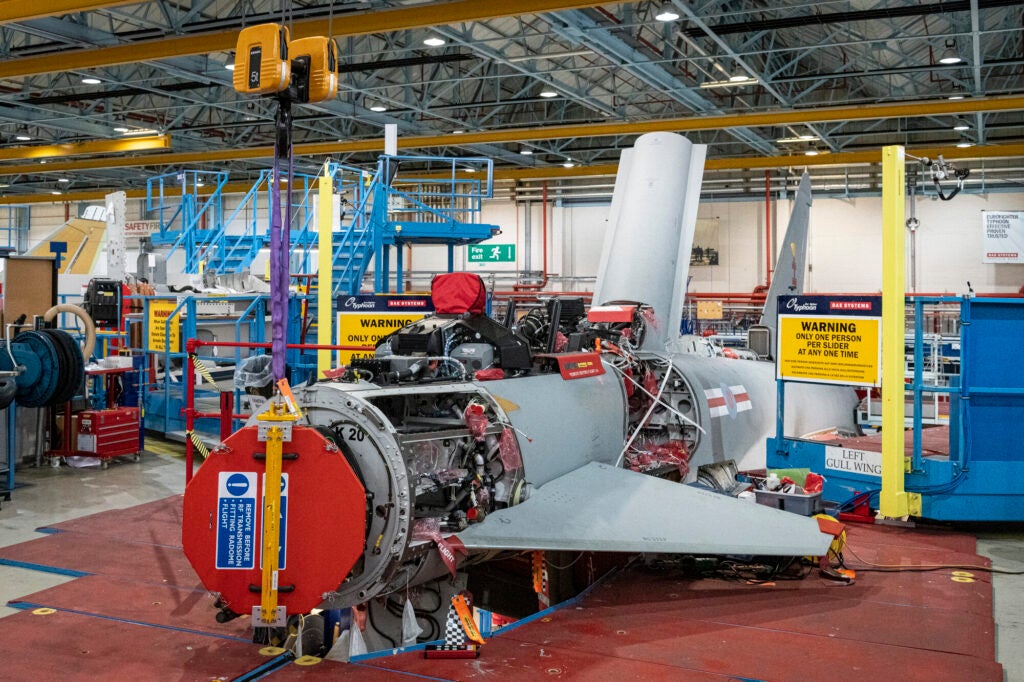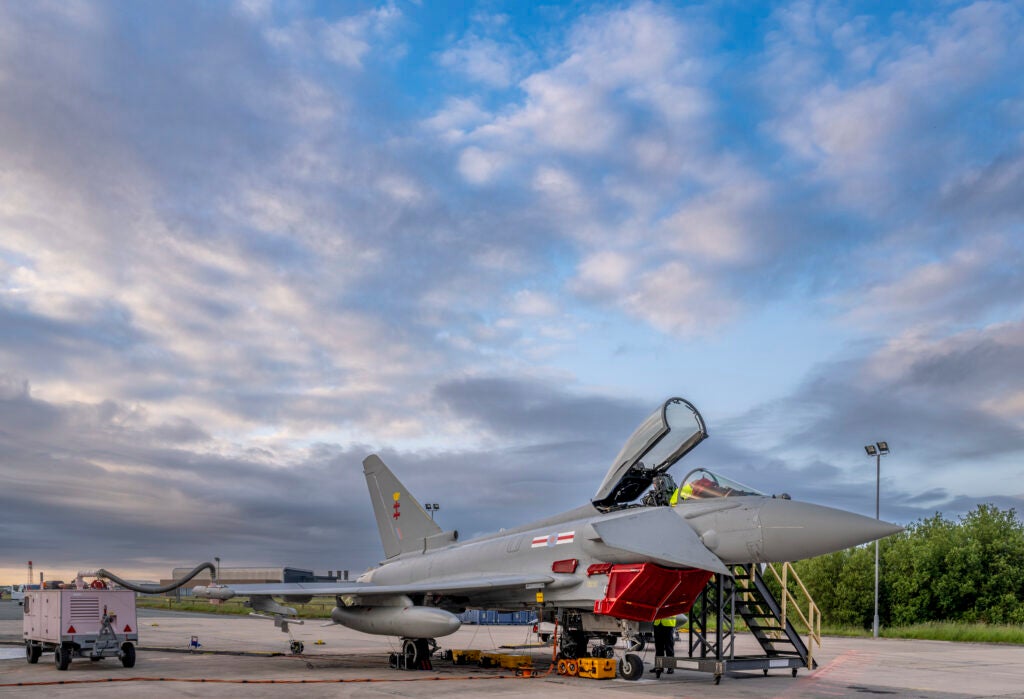Prototype British Eurofighter Typhoon Radar Makes First Flight
The Royal Air Force announced on 27 September, that a prototype of the European Common Radar System (ECRS) Mark 2 has made its first ever flight aboard a RAF Typhoon test and evaluation aircraft flying out of BAE Systems’ flight test facility in Lancashire.
The first flight of the radar follows the completion of ground-based tests of the active electronically scanned radar that began in January, after the prototype was installed in the Typhoon for the first time. According to the RAF, this testing program was collaboratively conducted by UK military procurement agency Defence Equipment & Support (DE&S), the RAF, Typhoon manufacturer BAE Systems, and radar developers Leonardo UK.
The ECRS Mk.2 is a variant of the CAPTOR-E active electronically scanned radar, improved to meet the Royal Air Force’s specific requirements. The largest difference is the ECRS Mk.2’s multi-functional array, which allows Typhoons to use the radar to conduct electronic warfare tasks simultaneously alongside detecting, identifying and tracking targets in the air and on the ground.

Air Commodore Nick Lowe, RAF Head Capability Delivery Combat Air and Typhoon Senior Responsible Officer said of the flight:
“Evolution of Typhoon’s air combat capability is paramount to ensure Typhoon continues to deter potential aggressors, defend our nation and defeat our adversaries wherever we need to fly and fight whether for the UK or in our staunch support to the NATO alliance. This first flight of this ECRS Mk2 prototype new radar in the test aircraft is a positive step towards ensuring this.”
“The development of the ECRS Mk.2 is fully utilising the UK’s world-class radar design skills”, said Tim Bungey, Chief Engineer for ECRS Mk.2 at Leonardo UK. “Over the past few months, its Processor, Receiver, and Antenna Power Supply and Control (APSC) units have all been re-engineered from the prototype design to further enhance the capacity, capability, and performance of the Mk2 system in alignment with the new antenna and electronic warfare capability”.

